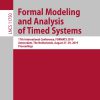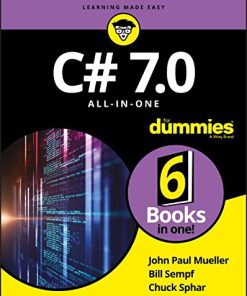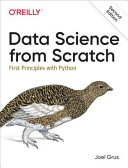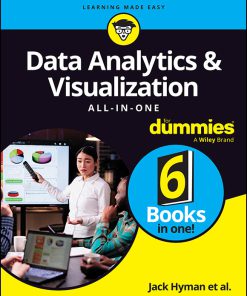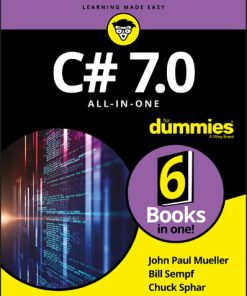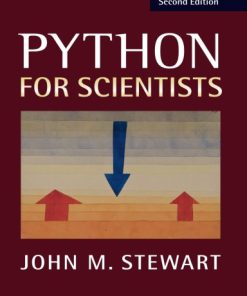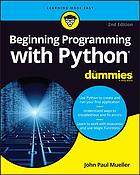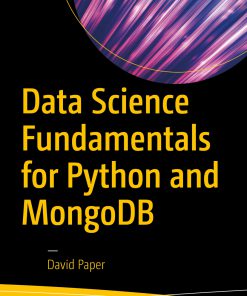Python for Data Science 2nd Edition by John Paul Mueller,Luca Massaron ISBN 1119547628 978-1119547624
$50.00 Original price was: $50.00.$25.00Current price is: $25.00.
Python for Data Science 2nd Edition by John Paul Mueller, Luca Massaron – Ebook PDF Instant Download/Delivery: 1119547628, 978-1119547624
Full download Python for Data Science 2nd Edition after payment
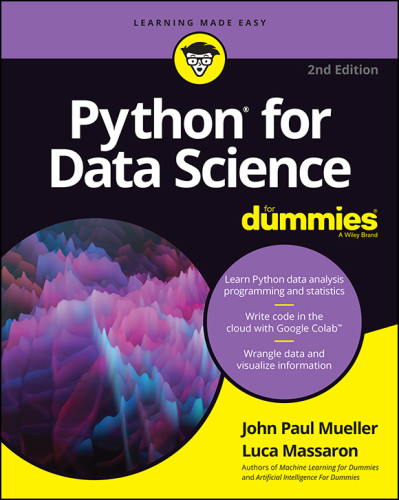
Product details:
ISBN 10: 1119547628
ISBN 13: 978-1119547624
Author: John Paul Mueller, Luca Massaron
The fast and easy way to learn Python programming and statistics
Python is a general-purpose programming language created in the late 1980s―and named after Monty Python―that’s used by thousands of people to do things from testing microchips at Intel, to powering Instagram, to building video games with the PyGame library.
Python For Data Science For Dummies is written for people who are new to data analysis, and discusses the basics of Python data analysis programming and statistics. The book also discusses Google Colab, which makes it possible to write Python code in the cloud.
- Get started with data science and Python
- Visualize information
- Wrangle data
- Learn from data
The book provides the statistical background needed to get started in data science programming, including probability, random distributions, hypothesis testing, confidence intervals, and building regression models for prediction.
Table of contents:
Part 1: Getting Started with Data Science and Python
-
Chapter 1: Discovering the Match between Data Science and Python
-
Chapter 2: Introducing Python’s Capabilities and Wonders
-
Chapter 3: Setting Up Python for Data Science
-
Chapter 4: Working with Google Colab
Part 2: Getting Your Hands Dirty with Data
-
Chapter 5: Understanding the Tools
-
Chapter 6: Working with Real Data
-
Chapter 7: Conditioning Your Data
-
Chapter 8: Shaping Data
-
Chapter 9: Putting What You Know in Action
Part 3: Visualizing Information
-
Chapter 10: Getting a Crash Course in MatPlotLib
-
Chapter 11: Visualizing the Data
Part 4: Wrangling Data
-
Chapter 12: Stretching Python’s Capabilities
-
Chapter 13: Exploring Data Analysis
-
Chapter 14: Reducing Dimensionality
-
Chapter 15: Clustering
-
Chapter 16: Detecting Outliers in Data
Part 5: Learning from Data
-
Chapter 17: Exploring Four Simple and Effective Algorithms
-
Chapter 18: Performing Cross-Validation, Selection, and Optimization
-
Chapter 19: Increasing Complexity with Linear and Nonlinear Tricks
-
Chapter 20: Understanding the Power of the Many
Part 6: The Part of Tens
-
Chapter 21: Ten Essential Data Resources
-
Chapter 22: Ten Data Challenges You Should Take
Index
People also search for:
which python libraries are used for data science
what are the python packages for data science
is python enough for data science
is python necessary for data science
why is python good for data science
Tags: John Paul Mueller, Luca Massaron, Python for, Data Science
You may also like…
Computers - Programming
Computers - Programming
Computers - Programming
Computers - Organization and Data Processing
Computers - Programming
Computers - Programming
Computers - Programming
Data Science Fundamentals for Python and MongoDB 1st Edition David Paper



